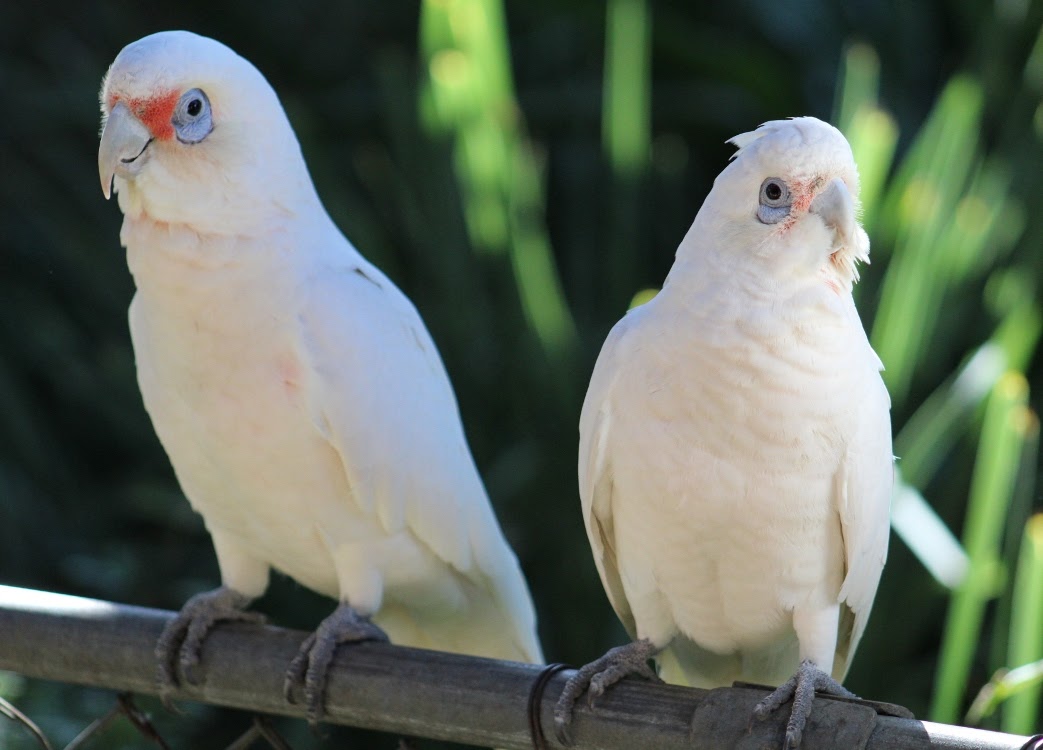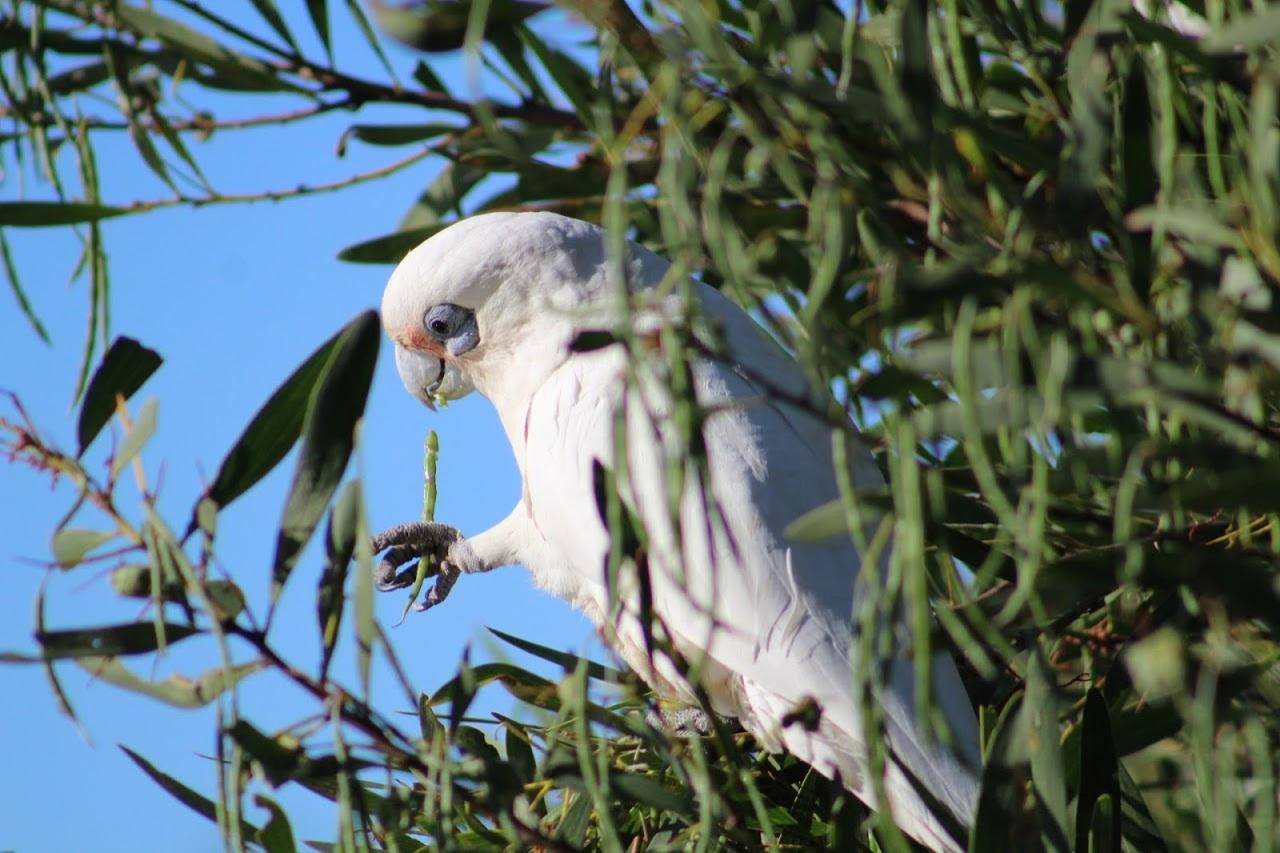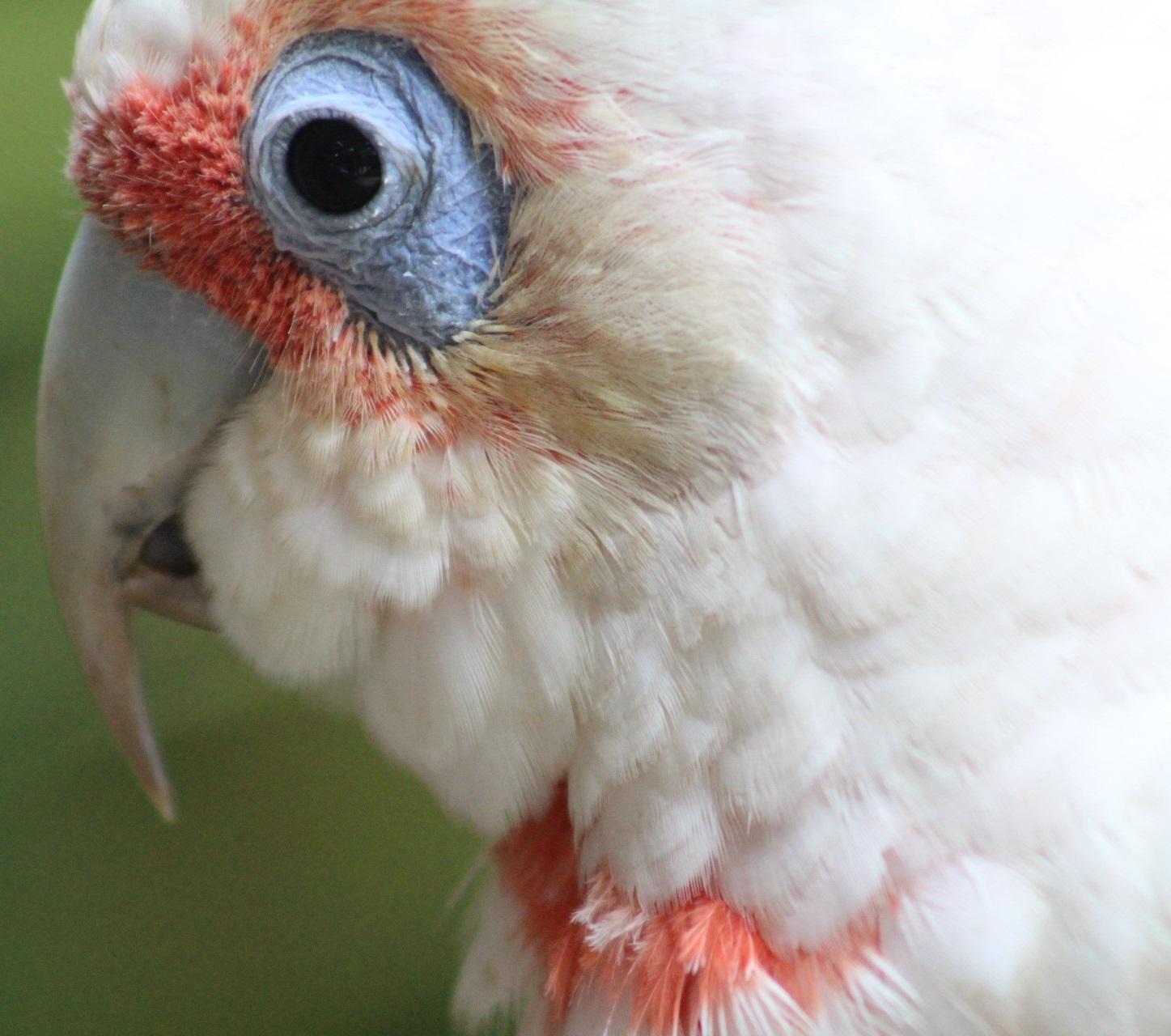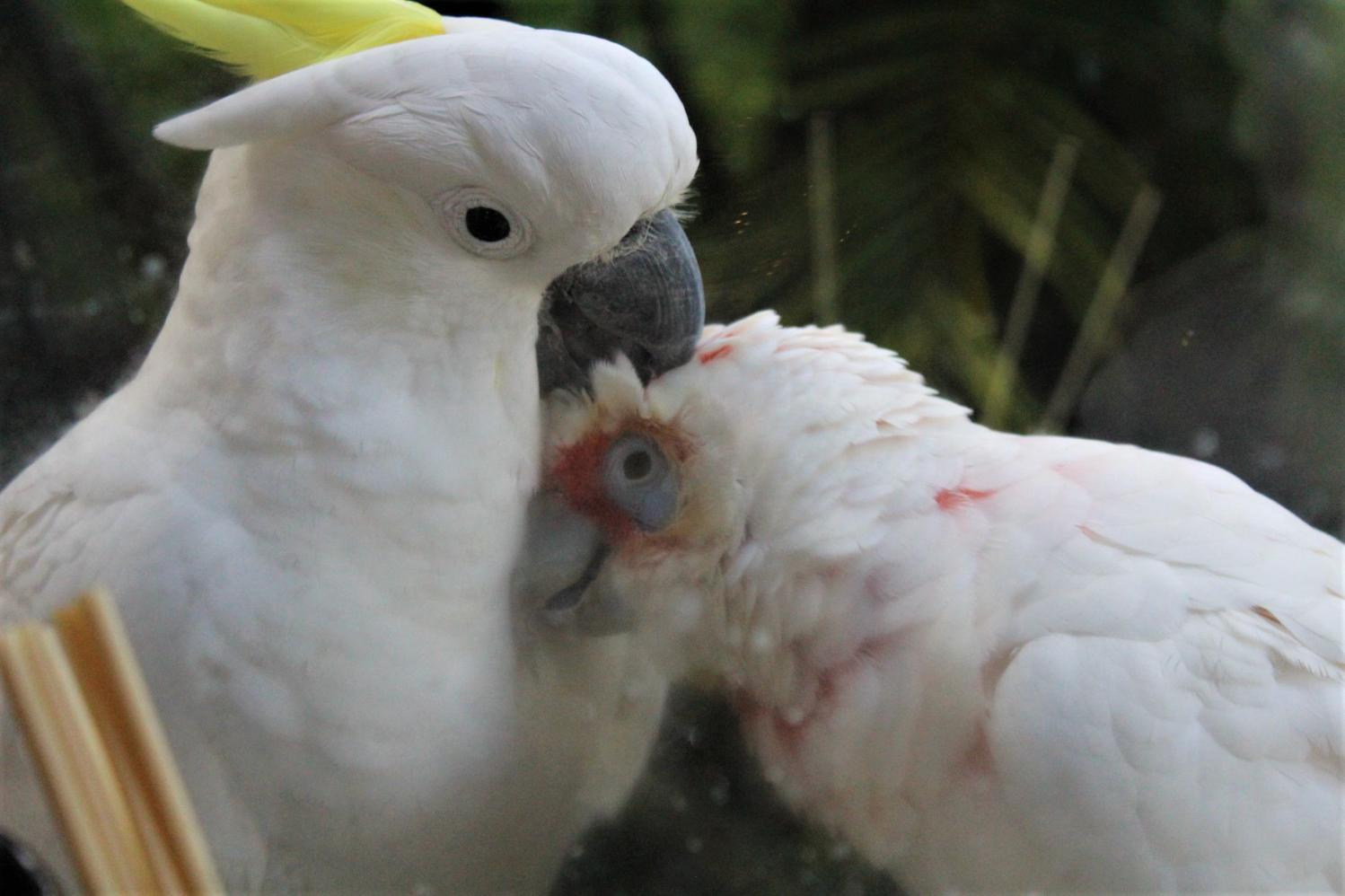Corellas of Pittwater
Both these species visit the Pittwater Online grove of Pittwater spotted gums and a Little Corella pair have made a nest in one of the tree hollows. On April 1st 2023 they brought their two fledglings into a tree where they could be photographed.
This Issue a few insights into these Corellas of Pittwater.

Left, Long-billed Corella, right; Little Corella
Little Corella
Scientific Name: Cacatua sanguinea The scientific name for Little Corella, Cacatua sanguinea, means 'Blood-stained Cockatoo' and refers to the dark pink markings between the eye and the bill.
Little Corellas are mostly white, with a fleshy blue eye-ring and a pale rose-pink patch between the eye and bill. In flight, a bright sulphur-yellow wash can be seen on the underwing and under tail. The sexes are similar in plumage, and young birds look like the adults, but are slightly smaller.
Little Corellas are thought to pair for life and will start breeding at the start of a long period of rain. The nest site is a suitable tree hollow, lined with shavings of wood. This is normally used for several years in row. Both sexes incubate the eggs and both care for the young chicks. The chicks hatch naked and totally dependent on their parents. Breeding occurs any time of the year when conditions are suitable. The clutch Size is 2 to 4 eggs, incubation 25 days. They will spend around 56 days as nestlings becoming fledglings.
.jpg?timestamp=1680312728000)
parent bird with two Little Corella fledglings, grooming one of them
.jpg?timestamp=1680312755956)
Breeding usually pairs nest in large colonies, and several nests may be found in the same tree. Where their ranges overlap, different corella species may nest together, but they are not thought to breed with each other.
When little corellas play, they become very noisy. They have conversations with each other, fly around and also show off. Little corellas show off by hanging themselves upside-down with their feet, beaks or both. They eat a variety of both wild and cultivated seeds and regularly feed on lawn grasses in urban areas. They frequently feed on cereal crops such as wheat, barley and maize and are considered a pest by the colonising landholders from Europe who commenced living in Australia from 1788. For the original landholders they were a pet in some cases and a food source in other places. The downy feathers are used in traditional ceremonies and dances where they adorn head and armbands.
The Little Corella is the most widely distributed of the three corella species found in Australia. The Western Corella is confined the extreme south-west of Western Australia, and the Long-billed Corella is found in the south-east.
Little Corellas feed in large noisy flocks. The birds feed mainly on the ground, and have to drink on a daily basis. The most common foods are grains and grass seeds. Some bulbs and fruits may also be eaten.

.jpg?timestamp=1680312920525)
Little Corella Fledgling Being Fed
PON yard May 1st 2023
The scientific name for Little Corella, Cacatua sanguinea, means 'Blood-stained Cockatoo' and refers to the dark pink markings between the eye and the bill.
Long-Billed Corella
.jpg?timestamp=1648584010745)
.jpg?timestamp=1648584436823)

